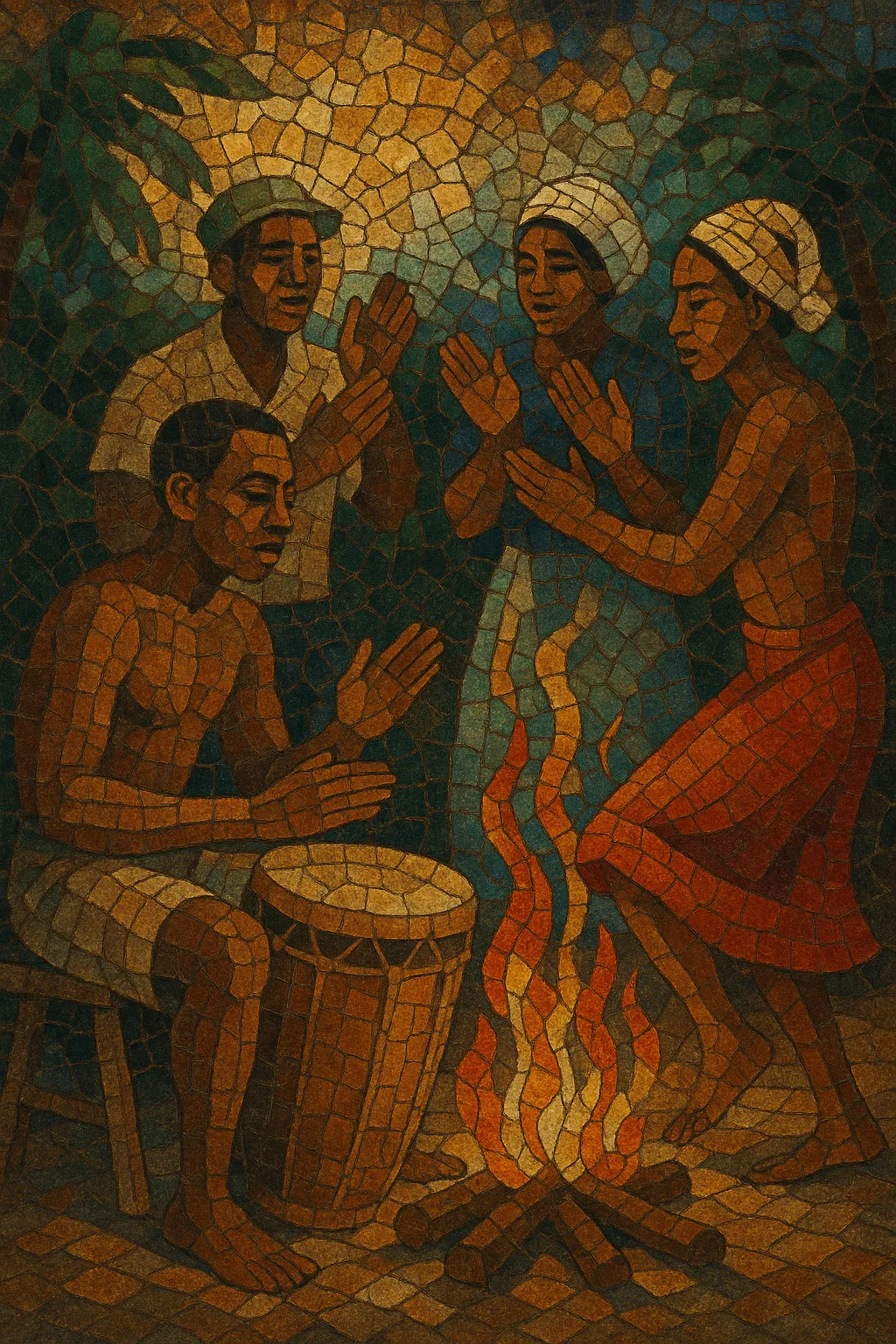Moutya is a traditional drum-and-dance genre from the Seychelles, rooted in the nocturnal gatherings of enslaved African and Malagasy communities. It centers on the tambour moutya, a large goatskin drum heated by a fire to tighten the skin and raise the pitch, and features call-and-response singing in Kreol Seselwa (Seychellois Creole).
Musically, moutya tends toward a slow-to-moderate 6/8 or 12/8 pulse with a hypnotic ostinato on the drum, interlocking handclaps, and a responsorial chorus. Melodies are chant-like and modal, often staying within a narrow range. The lyrics can be teasing, romantic, satirical, or socially observant, sometimes recounting hardship and desire.
Beyond entertainment, moutya historically served as a space for community cohesion, emotional release, and subtle resistance. Today it is upheld as a key emblem of Seychellois identity and has been recognized as part of the nation’s intangible cultural heritage, with contemporary artists and cultural troupes ensuring its continuity on stages and in festivals.
Moutya emerged during the era of slavery in the Seychelles, when people of African and Malagasy origin gathered by night on beaches and in clearings to drum, sing, and dance. The tambour moutya—hollowed wood with a goatskin head—was tuned over a fire and drove communal call-and-response singing in Kreol Seselwa.
During the colonial period, moral and religious authorities often discouraged or restricted moutya because of its sensual dance and nocturnal character. Despite pressures, the tradition persisted informally in villages, functioning as a space for emotional catharsis, social commentary, and coded expression.
After independence in 1976, cultural policy and community groups brought moutya back into public life, presenting it on stages, at schools, and in national celebrations. It became a celebrated emblem of Seychellois identity, taught to younger generations and documented by cultural institutions.
In the 21st century, moutya features prominently in Festival Kreol and other cultural events, with ensembles preserving its traditional form while some artists carefully fuse it with guitar, bass, or modern production. The genre has received formal recognition as part of Seychelles’ intangible cultural heritage, ensuring ongoing documentation, education, and transmission.


